UPSC Daily Current Affairs: 1st March 2025 | Current Affairs & Hindu Analysis: Daily, Weekly & Monthly PDF Download
GS2/Polity
Union Cabinet Approves Amendments Proposed by the JPC to the Waqf (Amendment) Bill
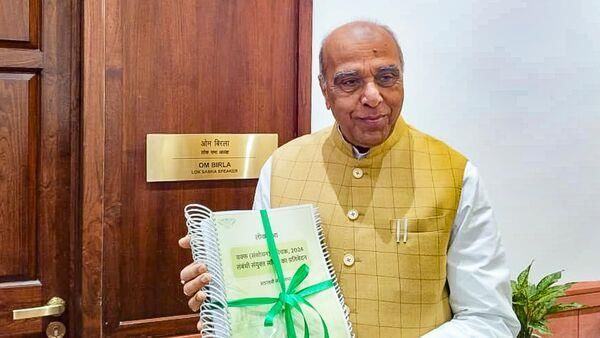 Why in News?
Why in News?
The Union Cabinet has approved all 14 amendments proposed by the Joint Parliamentary Committee (JPC) concerning the Waqf (Amendment) Bill, 2024. This Bill is anticipated to be presented in Parliament during the second half of the Budget session, starting on March 10. The amendments focus on crucial provisions related to the regulation, registration, and dispute resolution mechanisms for waqf properties in India.
- The Waqf (Amendment) Bill was introduced in August 2023 to amend the Waqf Act of 1995.
- The JPC has accepted 14 out of 58 proposed amendments while rejecting 44.
- The amendments aim to enhance government oversight and improve dispute resolution processes regarding waqf properties.
Additional Details
- Extended Time-frame for Registration: Initially, the law required all waqf properties to be registered on a central portal within six months of enactment. The JPC has allowed extensions if the mutawalli (caretaker) provides valid reasons for the delay, with the Waqf Tribunal empowered to grant such extensions.
- Role of District Collector in Dispute Resolution: The original Bill transferred powers for determining government property claims from the Waqf Tribunal to the District Collector. This provision has been modified to designate a senior state government officer instead.
- Changes in Waqf Board Representation: The Bill proposed the appointment of a non-Muslim Chief Executive Officer and non-Muslim members on waqf boards. The JPC amended this to ensure that a Joint Secretary-level officer must be involved, along with a member with expertise in Muslim law and jurisprudence.
The amendments aim to strike a balance between government oversight and the autonomy of waqf institutions, addressing concerns related to property disputes, legal recourse, and representation on waqf boards. The revised Bill is expected to be debated in Parliament soon, potentially leading to further discussions that may shape its final implementation.
GS3/Environment
Olive Ridley Turtle
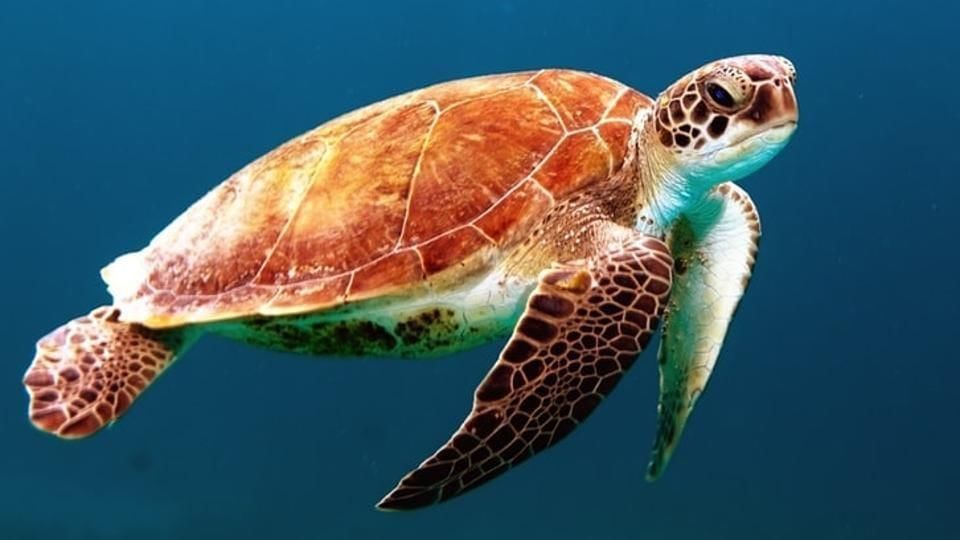 Why in News?
Why in News?
A comprehensive 16-year assessment of turtle populations in India indicates that the numbers of the Olive Ridley species are showing signs of a “steady or growing” population.
- The Olive Ridley Turtle is the second smallest and most abundant sea turtle species globally.
- Known for its distinctive olive green carapace and unique mass nesting behavior called Arribada.
- Primarily inhabits the warm waters of the Pacific, Atlantic, and Indian Oceans.
- Significant breeding ground located in Odisha's Gahirmatha Marine Sanctuary.
Additional Details
- Diet: The Olive Ridley Turtle is omnivorous, feeding on both marine plants and animals.
- Behavior: These turtles are generally solitary, preferring to live in the open ocean, and undertake extensive migrations between feeding and mating grounds.
- Conservation Status: Listed as Vulnerable on the IUCN Red List, protected under Schedule 1 of the Wildlife Protection Act, 1972, and included in Appendix I of CITES.
Overall, the health of the Olive Ridley Turtle population is crucial for marine biodiversity, and ongoing conservation efforts are essential to maintain their numbers.
GS3/Economy
What is ‘Bond Central’?
Why in News?
The Securities and Exchange Board of India (SEBI) has recently introduced a centralized database portal called Bond Central, aimed at providing a comprehensive and reliable source of information for corporate bonds in India.
- Bond Central serves as a single, authentic source of information on corporate bonds.
- It is developed by the Online Bond Platform Providers Association in collaboration with Market Infrastructure Institutions.
- The platform is free to access and is intended for the general public.
- It aims to enhance transparency and support informed decision-making among investors.
Additional Details
- Listings: Bond Central provides a unified view of corporate bonds across various exchanges and issuers, ensuring transparency and ease of comparison.
- Price Comparison: The platform allows investors to compare corporate bond prices with Government Securities (G-Secs) and other fixed-income indices, facilitating better decision-making.
- Investor-Centric Information: Detailed risk assessments, bond documents, and disclosures are available, enabling investors to evaluate opportunities effectively.
- Enhanced Transparency: By standardizing corporate bond-related data, the platform reduces information asymmetry and builds trust in the market.
In summary, Bond Central is an innovative initiative by SEBI designed to foster a more transparent and accessible corporate bond market in India, benefiting both investors and market participants.
GS1/Indian Society
What is Auroville?
Why in News?
Auroville recently celebrated its 57th birth anniversary with a bonfire meditation at the Amphitheatre, Matrimandir, highlighting its ongoing mission and community spirit.
- Auroville is an experimental international township located in Tamil Nadu, South India, near Pondicherry.
- Founded by Mirra Alfassa, known as the 'Mother', on February 28, 1968, it aims to explore alternative ways of living and working together peacefully.
- It is recognized as the largest and oldest surviving international intentional community in the world.
Additional Details
- Founding Vision: Auroville was established as an international cultural township to promote peace, harmony, and sustainable living, following the philosophy of the Mother.
- Geographical Transformation: The township has transformed from a barren desert into a thriving 3,000-acre area, now home to over 3 million trees and rich biodiversity, including 9 schools and various social enterprises.
- UNESCO Recognition: The project received support from UNESCO through four resolutions in 1966, 1968, 1970, and 1983.
- Administrative Control: Since 1980, Auroville falls under the administrative control of the Ministry of Education and is governed by the Auroville Foundation Act, 1988.
- The Government of India provides partial funding for the establishment and maintenance of Auroville through grants.
Auroville continues to be a beacon of innovative ways of living in harmony with nature and each other, reflecting its foundational ideals and commitment to community development.
GS3/Defence & Security
Naval Anti-Ship Missile (NASM-SR)
 Why in News?
Why in News?
The Defence Research & Development Organisation (DRDO) and the Indian Navy have successfully conducted flight trials of the Naval Anti-Ship Missile (NASM-SR) from the Integrated Test Range (ITR) in Chandipur, marking a significant advancement in naval defense capabilities.
- The NASM-SR features a Man-in-Loop capability allowing for in-flight retargeting.
- It utilizes a Bearing-only Lock-on mode for target selection among multiple close targets.
- The missile is guided by an Indigenous Imaging Infra-Red Seeker for terminal guidance.
- It incorporates a Fiber Optic Gyroscope-based INS and Radio Altimeter for mid-course guidance.
- The missile is powered by solid propulsion with an in-line ejectable booster and a long-burn sustainer.
Additional Details
- Manufacturing and Development: The NASM-SR has been developed by various DRDO laboratories, including the Research Centre Imarat, Defence Research and Development Laboratory, High Energy Materials Research Laboratory, and Terminal Ballistics Research Laboratory.
- Real-time Data Link: The missile features a high-bandwidth two-way datalink system, enabling real-time transmission of seeker images back to the pilot for effective in-flight retargeting.
This successful flight trial of the NASM-SR demonstrates India's growing capabilities in indigenous defense technology, enhancing maritime security and operational readiness.
GS2/International Relations
The SEC and the Hague Service Convention
 Why in News?
Why in News?
On February 18, 2025, the U.S. Securities and Exchange Commission (SEC) formally requested the Indian government to serve summons to Gautam Adani and Sagar Adani in a securities and wire fraud case under the Hague Service Convention.
- The Hague Service Convention is a multilateral treaty that simplifies the process of serving legal documents internationally in civil and commercial matters.
- The SEC is utilizing the Hague Service Convention to assist in delivering legal summons to the Adanis.
Additional Details
- Hague Service Convention: Officially known as the Convention on the Service Abroad of Judicial and Extrajudicial Documents in Civil or Commercial Matters (1965), this treaty standardizes cross-border legal document service, operating through Central Authorities in member countries to ensure efficient service and protect defendants' rights.
- SEC's Approach: The SEC has sought help from India’s Ministry of Law and Justice to officially deliver the summons. They are also exploring alternative service methods under Rule 4(f) of the U.S. Federal Rules of Civil Procedure, which allows service by email or social media if traditional methods are delayed.
- FCPA Enforcement Status: Although the Trump administration has temporarily paused the enforcement of the Foreign Corrupt Practices Act (FCPA) for 180 days, the SEC asserts that this pause does not apply retroactively, allowing their ongoing investigation into the Adanis to continue.
- India’s Reservations: India opposes alternative service methods outlined in Article 10 of the Convention, such as postal service or direct service by foreign judicial officers. An example includes a U.S. court being unable to serve legal documents via U.S. consular channels unless the recipient is a U.S. national residing in India.
- Mandatory Use of Central Authority: All service requests must go through a designated central authority for processing foreign summons, and requests must be in English or include an English translation. A relevant case is the Punjab National Bank (International) Ltd. v. Boris Shipping Ltd. (2019), where a U.K. court ruled service through alternative means as invalid due to India's reservations.
The service process under the Hague Service Convention in India typically takes six to eight months. After receiving a request, the designated authority verifies and forwards it, and upon completion, an acknowledgment is issued to confirm successful service. Moving forward, it is essential to expedite processing mechanisms and strengthen bilateral cooperation to improve the efficiency of legal document service.
GS3/Environment
Species in the News: Doomsday Fish
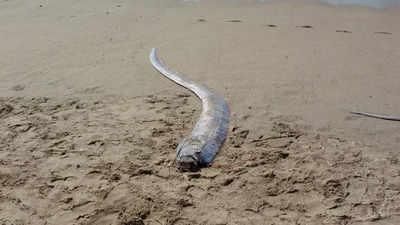 Why in News?
Why in News?
Recent sightings of the rare oarfish, commonly referred to as the "Doomsday Fish," near the shores of Baja California Sur, Mexico, have ignited speculation and a frenzy on social media.
- The oarfish's appearance is often associated with impending natural disasters, particularly in Japanese folklore.
- In 2011, multiple oarfish washed ashore in Japan just before the Tohoku earthquake and tsunami, reinforcing this belief.
Additional Details
- Japanese Folklore: The oarfish is known as "Ryugu no tsukai", meaning "Sea God’s Palace Messenger," and is believed to foreshadow calamities.
- Some cultures view the oarfish as a messenger of the deep, alerting humans to significant oceanic disturbances.
- While some scientists theorize that oarfish may detect underwater vibrations from tectonic activity, there is no conclusive scientific evidence to confirm this hypothesis.
- Factors such as powerful ocean currents, storms, or changes in water temperature, including the El Niño phenomenon, might influence the oarfish's movements.
- A 2019 study published in the Bulletin of the Seismological Society of America found no correlation between sightings of oarfish and earthquakes in Japan.
The fascination with the oarfish highlights the blend of science and folklore, as well as the ongoing intrigue surrounding natural disasters and oceanic phenomena.
GS3/Defence & Security
Exercise Desert Hunt 2025
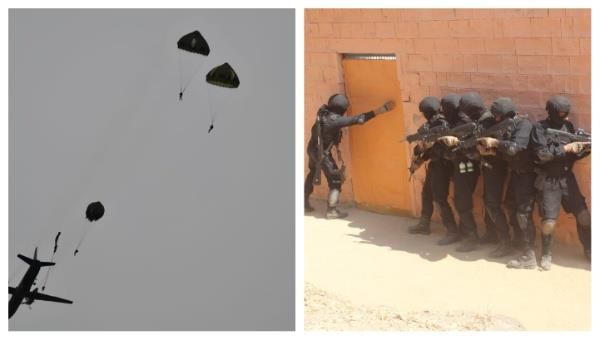 Why in News?
Why in News?
The Exercise Desert Hunt 2025 took place at Air Force Station Jodhpur from February 24 to 28, 2025. This significant event showcased the collaborative efforts of the Indian Armed Forces to address emerging security challenges.
- The exercise was an integrated Tri-Service Special Forces drill conducted by the Indian Air Force.
- It involved participation from elite Para (Special Forces) of the Indian Army, Marine Commandos of the Indian Navy, and Garud (Special Forces) of the Indian Air Force.
- The aim was to enhance interoperability, coordination, and synergy among the three Special Forces units.
Additional Details
- Aim: This high-intensity drill focused on ensuring a swift and effective response to security challenges through improved collaboration.
- Activities Included: The exercise encompassed various operations such as airborne insertion, precision strikes, hostage rescue, counter-terrorism operations, combat free falls, and urban warfare scenarios.
- The combat readiness of the participating forces was rigorously tested under realistic conditions.
Overall, Exercise Desert Hunt 2025 served as a vital platform to reinforce the commitment of the Indian Armed Forces towards national security through seamless inter-service cooperation.
GS3/Science and Technology
Solar Ultraviolet Imaging Telescope (SUIT)
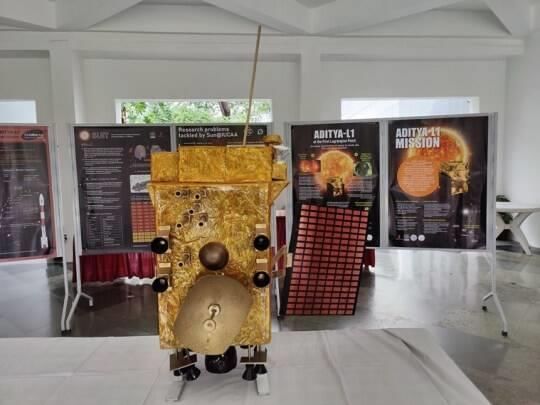 Why in News?
Why in News?
The Solar Ultraviolet Imaging Telescope (SUIT), an instrument aboard the Aditya-L1 mission, recently detected an X6.3-class solar flare, which is among the most powerful types of solar eruptions.
- SUIT is part of India's first dedicated solar mission, Aditya-L1, launched on September 02, 2023.
- It was developed by the Inter-University Center for Astronomy and Astrophysics (IUCAA) in collaboration with ISRO.
- Designed to capture full-disk and region-of-interest images of the Sun, SUIT operates continuously from the first Lagrange point.
Additional Details
- Instrument Design: SUIT features an array of 11 scientifically calibrated filters (3 broad-band & 8 narrow-band) that operate within a wavelength range of 200 to 400 nanometers, enabling comprehensive solar imaging.
- Primary Objective: The primary aim of SUIT is to analyze the dynamic interactions within the solar atmosphere, focusing on energetic phenomena like jets, flares, filament evolution, and eruptions.
- Significance of Measurements: For the first time, SUIT will facilitate measurements of spatially resolved solar spectral irradiance, which is essential for understanding the sun-climate relationship.
What is a Solar Flare?
A solar flare is characterized as a sudden and intense release of energy from the solar atmosphere, representing the largest explosive events within our solar system. These flares manifest as bright areas on the Sun and can last from several minutes to hours. They are a result of the dynamic nature of the Sun's magnetic field, which can abruptly release energy in the form of light, radiation, and high-energy charged particles.
Effects of Solar Flares on Earth
The intense radiation from solar flares can have significant impacts, including:
- Disruption of satellite communications and radio signals.
- Increased risks to astronauts in space.
- Inducement of geomagnetic storms, which can affect power grids and trigger auroras at lower latitudes.
In summary, SUIT's observations contribute crucial insights into solar activity, which is vital for understanding both solar phenomena and their effects on Earth.
GS2/Governance
Border Roads Organisation (BRO)
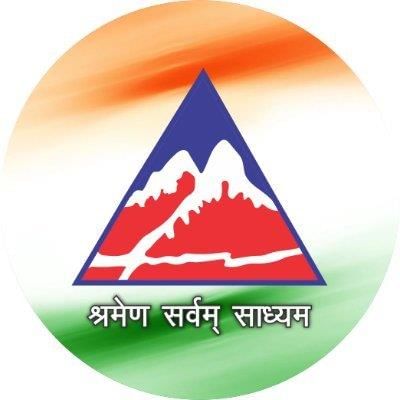 Why in News?
Why in News?
Recently, at least 14 workers from the Border Roads Organisation (BRO) were rescued from an avalanche in Mana, a high-altitude village located in Uttarakhand's Chamoli district.
- The BRO is responsible for constructing and maintaining roads in India's border areas.
- Established on 7 May 1960, it operates under the Ministry of Defence.
- It plays a crucial role in supporting the Indian Armed Forces with infrastructural development.
Additional Details
- Establishment: BRO was formed to secure India's borders and enhance infrastructure in remote regions, particularly in the north and north-east states.
- Functions:Beyond road construction, BRO has diversified its operations to include:
- Construction of steel bridges
- Development of airfields and townships
- Tunneling works and hydroelectric projects
- Governance: The Border Roads Development Board (BRDB) was established to ensure effective project execution, with the Prime Minister as Chairman and the Defence Minister as Deputy Chairman.
- Personnel from the General Reserve Engineer Force (GREF) and the Indian Army's Corps of Engineers are involved in BRO's operations.
- Operational Role: BRO plays a vital role during national emergencies and conflict situations, assisting in road maintenance and the rehabilitation of forward airfields for the Indian Air Force.
- Notable Achievements: One of BRO's major accomplishments is the Atal Tunnel, recognized as the world's longest highway tunnel at 9.02 kilometers.
- Motto: The organization's motto is Shramena Sarvam Sadhyam, which translates to "everything is achievable through hard work."
In summary, the Border Roads Organisation not only contributes significantly to national security through infrastructure but also plays a crucial role in disaster response and recovery efforts.
GS3/Science and Technology
Amazon Unveils Ocelot Quantum Computing Chip
Why in News?
Amazon has recently introduced a prototype of its first in-house quantum computing chip, named Ocelot, marking a significant advancement in the field of quantum technology.
- Ocelot is a new quantum computing chip featuring a nine-qubit design.
- It has been developed by the Amazon Web Services (AWS) team at the California Institute of Technology.
- The chip uses a novel architecture that incorporates error correction from the outset.
Additional Details
- Ocelot Chip Architecture: The chip comprises two integrated silicon microchips, each approximately one square centimeter in size, stacked together and electrically connected.
- Core Components:The chip includes 14 core components:
- Five data qubits, known as cat qubits.
- Five buffer circuits to stabilize the data qubits.
- Four additional qubits for error detection on the data qubits.
- Cat Qubit: This term is derived from the famous thought experiment, Schrödinger's cat. These qubits are designed to suppress certain types of errors, which reduces the resources needed for quantum error correction.
- The design aims to facilitate the development of highly efficient hardware systems for quantum computing.
The introduction of the Ocelot chip is a pivotal step for Amazon in the emerging field of quantum computing, showcasing innovative technology that could lead to significant advancements in computational capabilities.
GS3/Environment
Kundi Traditional Water Harvesting
Why in News?
As summer approaches, the arid and semi-arid regions of Rajasthan, particularly in Churu, Jaisalmer, and Barmer districts, heavily depend on traditional rainwater harvesting methods to manage their limited water resources.
- The Kundi system is a traditional method of rainwater harvesting found in Churu, Rajasthan.
- Kundis are circular or rectangular pits designed to store drinking water, lined with bricks or stones.
- These structures utilize sloped catchments to collect rainwater and funnel it into the pit.
- A stone slab or lid covers the pit to prevent contamination and evaporation.
- Kundis are crucial for communities in regions with scarce groundwater and irregular rainfall.
Additional Details
- Khadin: An earthen embankment built across slopes to retain surface runoff, helping with moisture conservation and groundwater recharge. This method has been in use since the 15th century.
- Johads: Small crescent-shaped embankments located in Rajasthan and Haryana that store rainwater, recharge groundwater, and enhance water availability.
- Baolis / Stepwells: Deep wells with stairs leading to groundwater storage, utilized for various purposes including drinking and irrigation. Notable examples include Rani ki Vav (a UNESCO World Heritage site) and Agrasen ki Baoli.
- Virdas: Shallow wells in the Kutch region of Gujarat, used by Maldhari pastoralists for drinking water and livestock, which separate fresh rainwater from saline groundwater.
- Tankas: Circular underground tanks found in homes and temples in regions like Bikaner and Jaisalmer, designed for rainwater storage and lined with lime for purification.
- Zabo: Terraced ponds on hill slopes in Nagaland that collect rainwater for drinking and irrigation, while also preventing soil erosion and boosting groundwater recharge.
- Kuls: Small channels in Himachal Pradesh, Uttarakhand, and Jammu & Kashmir that divert glacial meltwater to fields for irrigation, constructed from local materials and managed by local communities.
- Ahar-Pyne: An ancient irrigation system from the Mauryan period where reservoirs (Ahar) collect rainwater, and channels (Pyne) distribute it for agricultural use.
- Eri: An interconnected chain of tanks from the Chola period in Tamil Nadu, serving purposes such as irrigation, groundwater recharge, and flood control.
- Surangam: Horizontal tunnels dug into hillsides in Kerala and Karnataka to access aquifers, similar to Iran's Qanat system, prevalent in the Malabar and Kasargod regions.
- Phad Irrigation: A community-managed canal irrigation system in Maharashtra drawing water from rivers, particularly useful in drought-prone areas, and overseen by a local village council.
Traditional water harvesting systems like the Kundi play a pivotal role in ensuring water availability in India's diverse climatic regions. Their continued use is essential for sustainable water management and community resilience.
|
44 videos|5271 docs|1113 tests
|
FAQs on UPSC Daily Current Affairs: 1st March 2025 - Current Affairs & Hindu Analysis: Daily, Weekly & Monthly
| 1. What are the key amendments proposed by the JPC to the Waqf (Amendment) Bill? |  |
| 2. What is the significance of the Olive Ridley Turtle in marine ecosystems? |  |
| 3. What is 'Bond Central' and its purpose? |  |
| 4. What is Auroville, and what is its main objective? |  |
| 5. What is the Naval Anti-Ship Missile (NASM-SR) and its capabilities? |  |
















